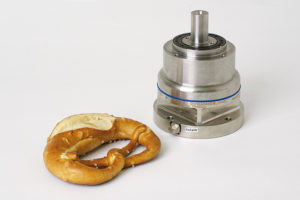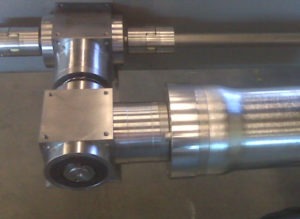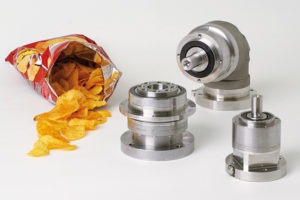Gearbox oil determines classification in the food industry

To standardize lubricants for the food industry, the NSF (or USNSF: the US National Sanitation Foundation) developed a classification for this group under the denominator H1, H2 and H3. This classification, although originally American, is very widespread and widely used in the food sector. The application of the class depends on the extent to which products can come into contact with food. The names NSF and USDA are used as common terms for lubricants for the food industry.
‘H’ classification lubricant for food processing industry
The classification starts at H1, the highest rating, and goes to H3. What this exactly means you can read below.
H1 Lubricants may be used in applications where limited contact with food is possible. That contact should be limited, as the contamination should not exceed 10 ppm. Manufacturers of lubricants who want to give their product the label H1 may only use ingredients from a list of approved components, prepared by the American FDA. (Food and Drug Administration, our Food and Beverage Authority.)
H2 Lubricants may be used in the food processing industry but may not be in contact with the food product. There is no list of permitted ingredients as with the H1 agents, but there are many restrictions on toxicology and heavy metals. For example, there may be no carcinogens, mutagens, selenium, arsenic, mineral acids and such kind of ingredients inside.
H3 Is limited to mainly anti-corrosion products for vehicles and such kind of equipment which are used in the production space.
Gearbox oil: HACCP overboard?
H1 lubricants are slightly more expensive at purchase price, but have the advantage that unlike the standard lubricants, they are not part of the HACCP procedure. Therefore, anyone who uses H1 lubricant no longer has to pay attention to lubricants within this HACCP program. Using it does not only provide peace of mind with regard to food safety, but in the longer term it is also more economical because no time-consuming procedure must be followed and/or repeated.
Standard directive food safety for gearboxes: ISO 21469
 Although the H1, H2 and H3 classification has global acceptance, it was still desired to develop a standard directive, the ISO 21469. That standard does not doubt the H1 classification, but goes one step further. Manufacturers who want to mention the ISO 21469 on their products must take precautions in their own production and meet additional conditions: a proper labelling, a risk assessment of their own production methods, an audit of production facilities and analytical tests on the product.
Although the H1, H2 and H3 classification has global acceptance, it was still desired to develop a standard directive, the ISO 21469. That standard does not doubt the H1 classification, but goes one step further. Manufacturers who want to mention the ISO 21469 on their products must take precautions in their own production and meet additional conditions: a proper labelling, a risk assessment of their own production methods, an audit of production facilities and analytical tests on the product.
Due to the great acceptance of the H1 classification, there has been a lot of reluctance to use the ISO 21469 for a long time. Opponents say that this is purely a commercial tool to work out smaller marketers, proponents claim again that the standard is a new, logical step towards integrated food safety.
Foodgrade Gearbox Oil
Apex Dynamics is using a “NSF-H1” approved lubricant from a US manufacturer for its “foodgrade” gearboxes. A lubricant of the highest food safety class. For more information about this foodgrade lubrication, the specification or safety sheets, please contact Apex Dynamics.
Source : Automation Magazine






